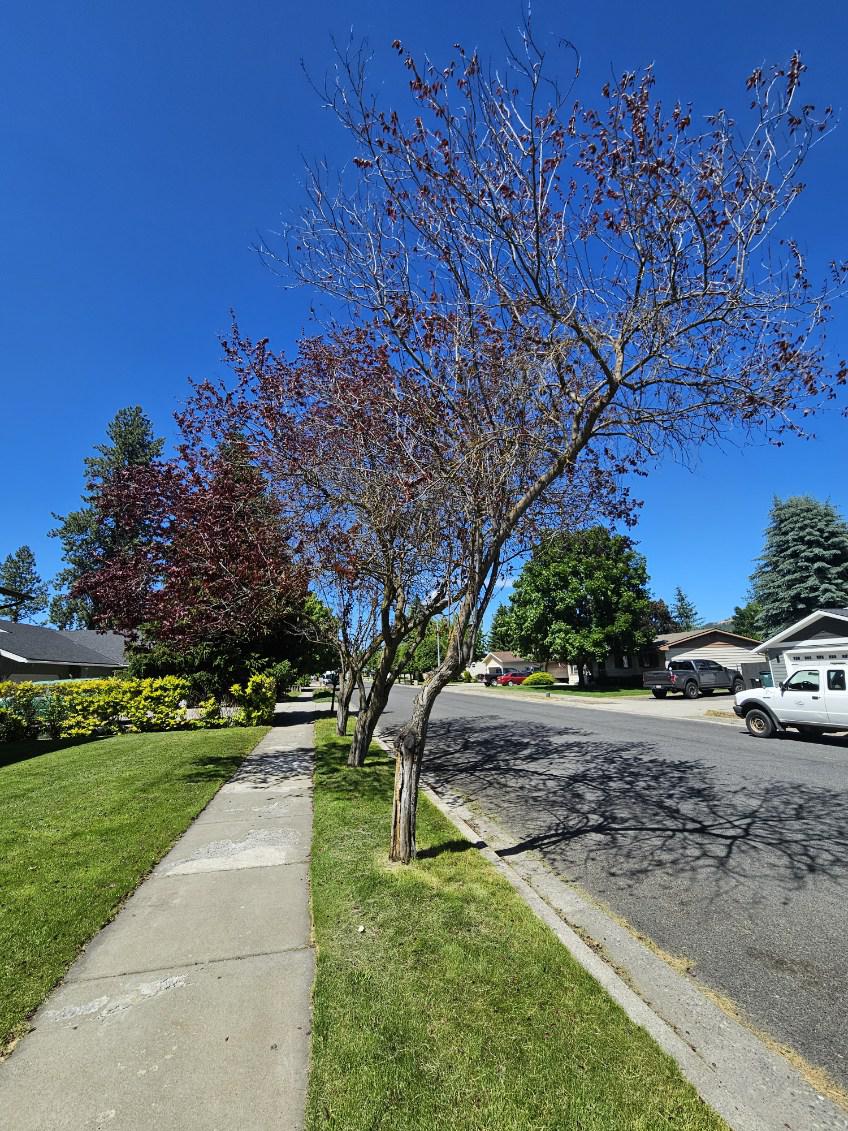COEUR d’ALENE, Idaho – The City of Coeur d’Alene sent out a notice on July 8 from their Urban Forester Nick Goodwin concerning Purple Leaf Plum trees, also known as Flowering Ornamental Plum trees, to remind residence not to plant them and how to go about removing them.
According to Goodwin, the plum trees “have been planted all throughout the Coeur d’Alene area and, if you happen to have one planted in your yard or a right-of-way location such as a grassy sidewalk strip or swale, you may be looking at it with concern, and rightly so. Although beautiful, these trees have many issues that led to their removal from the City of Coeur d’Alene approved street tree planting list many years ago. These trees were extremely popular as street trees in the early to late 90’s, and there is still a large population of Purple Leaf Plum trees in our Urban Forest”
The notice gave three reasons for why the trees are short-lived:
- These trees are multi-stemmed by nature and have a poor structure. This makes the tree more prone to branch failure and almost always will have splitting trunks within 15-20 years of planting.
- A very shallow root system makes them prone to uprooting in wind events and storms.
- A plethora of diseases and pests target this tree, affecting its canopy and overall health.
This is why planting the tree is not recommended in general, and why it is not permitted to be planted in right-of-way locations as street trees in Coeur d’Alene.
Goodwin continued with, “This year, you may look at these trees and notice that they look dead or have a very weak canopy and, in fact, they may be dead or have a very weak canopy. Why? We had a severe cold snap in late winter that appears to have greatly affected this species of tree specifically. Because of their early bloom, these trees appear to have borne the brunt of the damage resulting from the cold snap, resulting in a tree that appears dead or has significant dieback. This, combined with some of the other pests and diseases that affect Purple Leaf Plum trees, has caused problems that will need to be addressed. Many trees will need to be removed and replaced. Others may need pruning to reduce the amount of dead wood.”
It is advised that if you have a tree that is in a condition similar to the tree pictured below, the best course of action is to contact the City of Coeur d’Alene Urban Forestry office for assistance. Their office can assist with identifying the tree, its location (right-of-way or private property), and provide guidance with proper tree care to deal with the issue.

Goodwin assures that the Urban Forestry office is working to mitigate issues on city-owned and managed properties, but reminds residents that the city does not have a crew that can remove trees for homeowners from their private properties.
Also, Goodwin states that “by ordinance, homeowners are responsible for trees located in public right-of-way locations abutting their property.”
The city does have a cost share program to assist with tree work costs, as well as a tree service licensing program to help you find a company that can perform this work safely and correctly.
Before commencing with any work on trees in the public right-of-way, property owners are advised to contact the urban forestry office as no-cost permits are required for all right-of-way tree removals and pruning.
If you have a tree you are concerned about or want to report a dead tree or other issue, please contact the City’s Urban Forestry office by phone 208-769-2266 or via email at Ngoodwin@cdaid.org.







